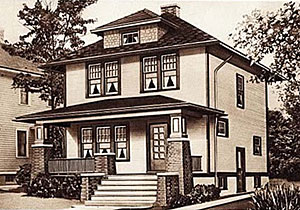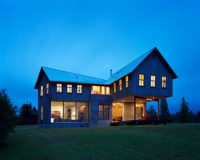Why we are drawn to those sexy, dangerous houses.
Some of our readers call our annual Record Houses issue the “Swimsuit Issue.” It’s not exactly our mission (and we don’t normally equate ourselves with Sports Illustrated), but we’ll take it. Every year since 1956, Architectural Record has compiled and published a collection of houses from across the world — a telling snapshot that captures and reflects the state of architecture at a distinct moment in time.

The houses we select — not just for Record Houses, but also for our new House of the Month column and the Featured Houses section on our website — are not wallflowers or trend followers. They stick their necks out and strut, so, unsurprisingly, they attract lots of attention, both positive and negative. Apparently, not everyone is swept away by their sex appeal. You, our readers, we are happy to say, are opinionated and vocal.
Over the years we have been called out on the houses we publish and the preponderance of high-maintenance material choices and big budgets. We have been taken to task about context and a lack of conformity — buildings that don’t follow the conventional setback from the street or apply the prevailing local material palette have been accused of “snubbing” their neighbors. We have listened as readers marvel that roofs attached to the structure by delicate moorings do not let loose and take flight. We have been asked how occupants perform such pedestrian duties as putting away groceries, making the bed, and cleaning. We have been advised to refer to Fine Homebuilding for guidance in the residential-project-selection process as well as for edification in terms of addressing our audience. We have been called overindulgent. And we have been lambasted, again and again and again, for acknowledging houses with handrail-less stairs. In a nutshell, some readers tell us, the projects we highlight are too expensive, too different, too impractical — too dangerous!
In the world of everyday practice, a focus on durability and utility— firmitas and utilitas — is a given. But the houses you will see on these pages are exploratory and look beyond. There is a good likelihood they don’t have all the problems solved, all the kinks worked out — they invariably are imperfect. We know this is a byproduct of the tradition of the house as laboratory for the development and testing of ideas that may eventually seek expression at a larger scale.
We value functionality and code compliance. But they do not motivate architects to test limits and move the discipline forward. These matters, therefore, are not the primary focus of Record Houses, nor should they be allowed to impede the issue’s commitment to serving as a showcase for design and innovation. The houses here are ones that set forth a vision — not ones that illustrate tried and tested design and construction methods that have resolved yesterday’s challenges and refined last decade’s ideas. They are not the archetypal house, which reassures us and reiterates what has long been a part of our lexicon.
Architecture, at its most basic, is about sheltering in an artful way. The house is most representative of that idea, of course, and can be described as the atom of the architectural molecular world as well as serving as a barometer for future trends and directions in the field. And, by its very nature, the house is a cultural artifact, revealing much about its time and place and telling stories about its occupants and the people who designed it.
Adolf Loos questioned whether the house, like all other architecture that fulfills a direct function — famously excepting the tomb and monument — can be considered art. We think it can (the history of architecture offers us many examples). But to do so, it must forsake being “safe,” and take on all of the challenges and risks that are inherent in experimentation and investigation.

